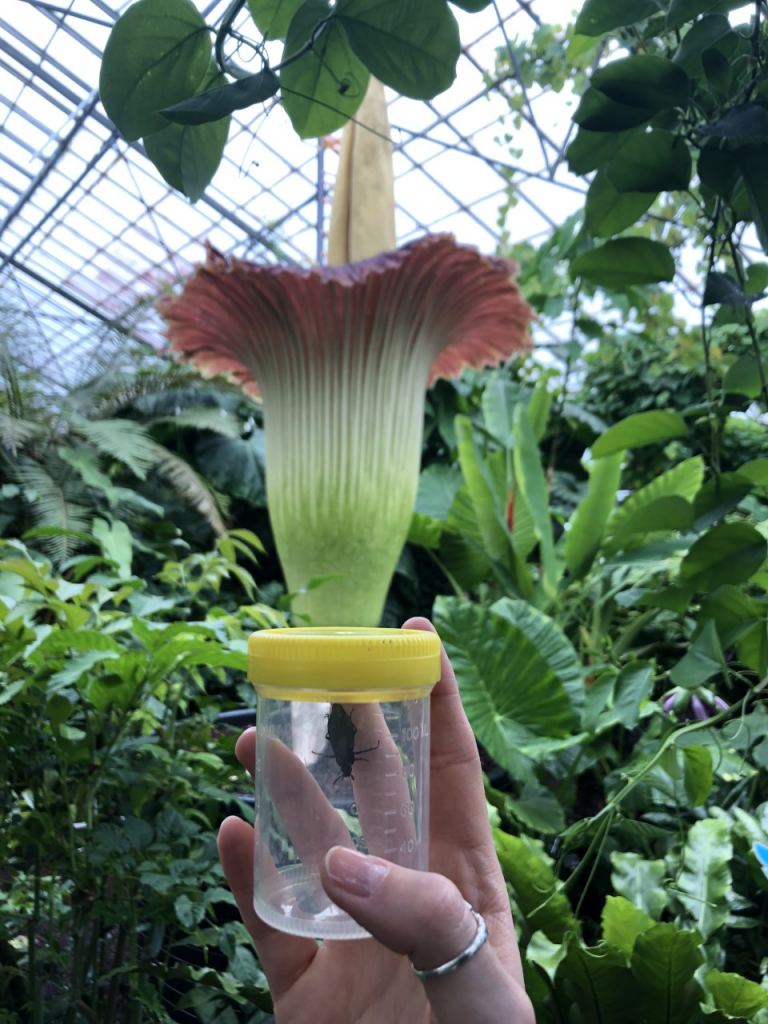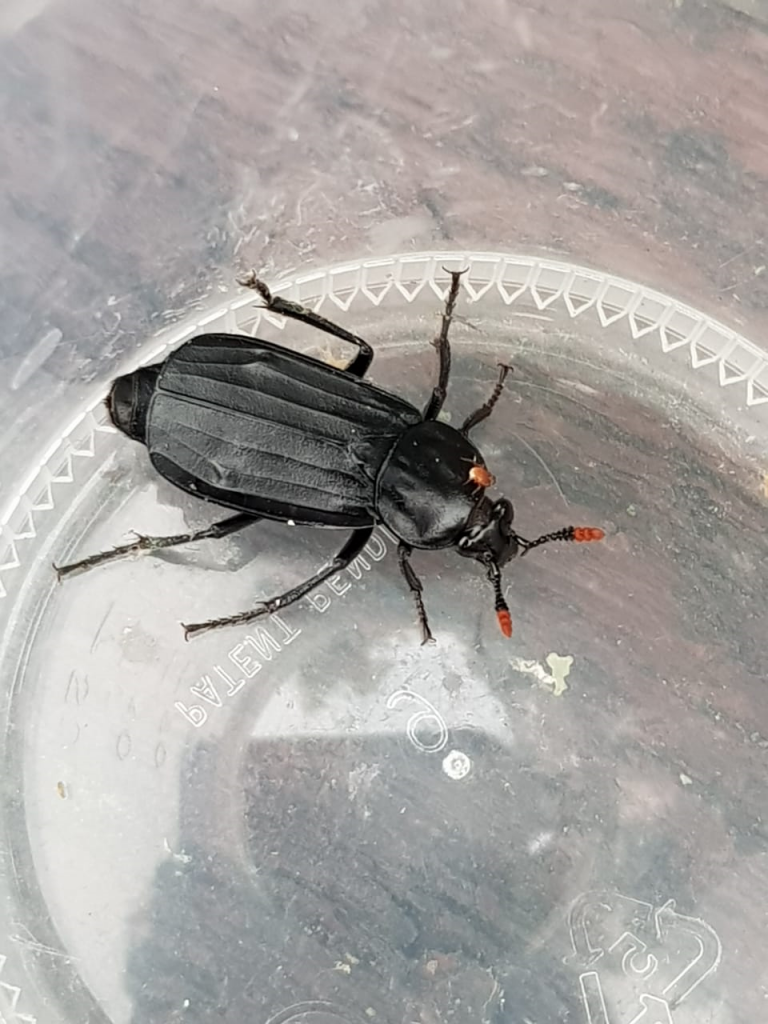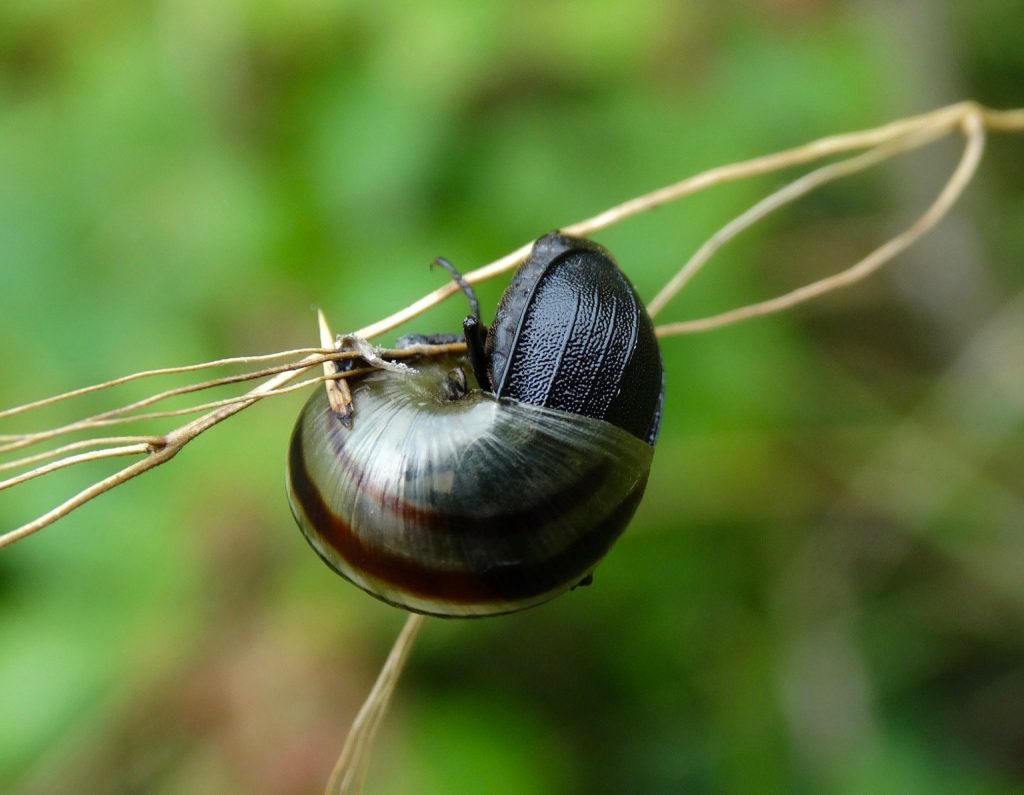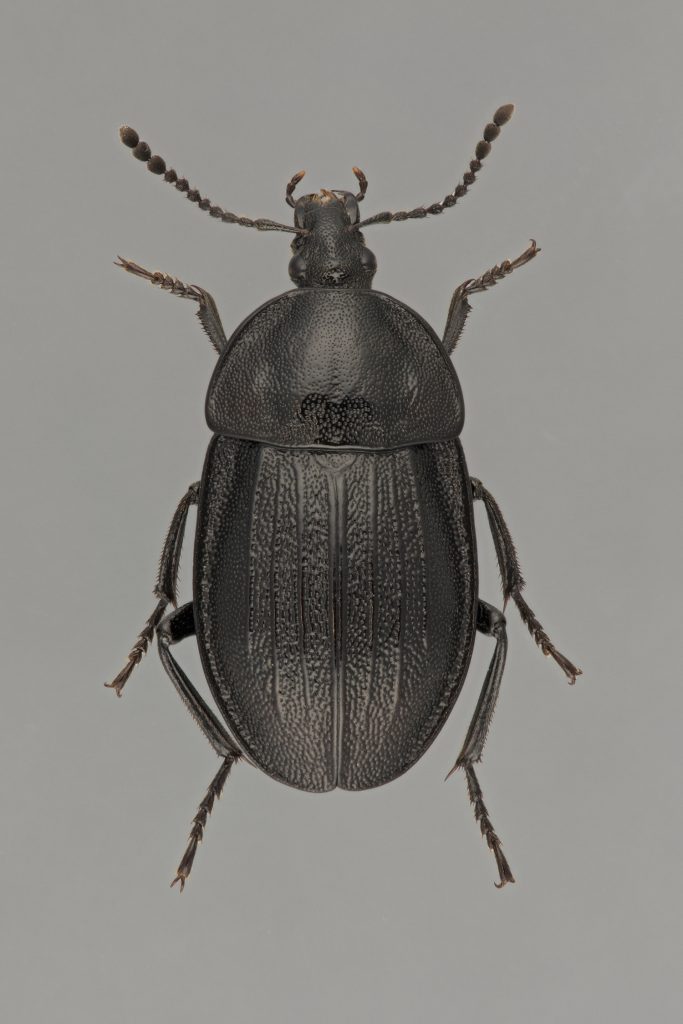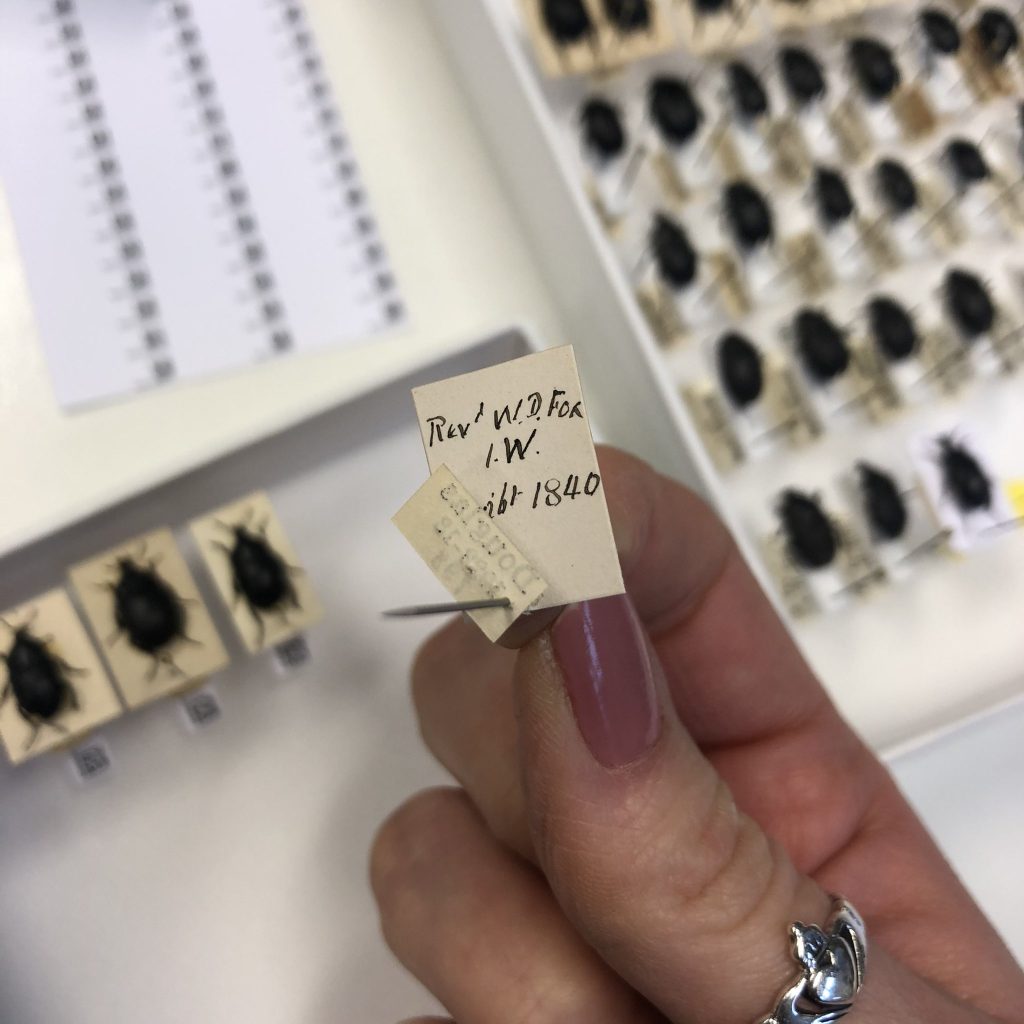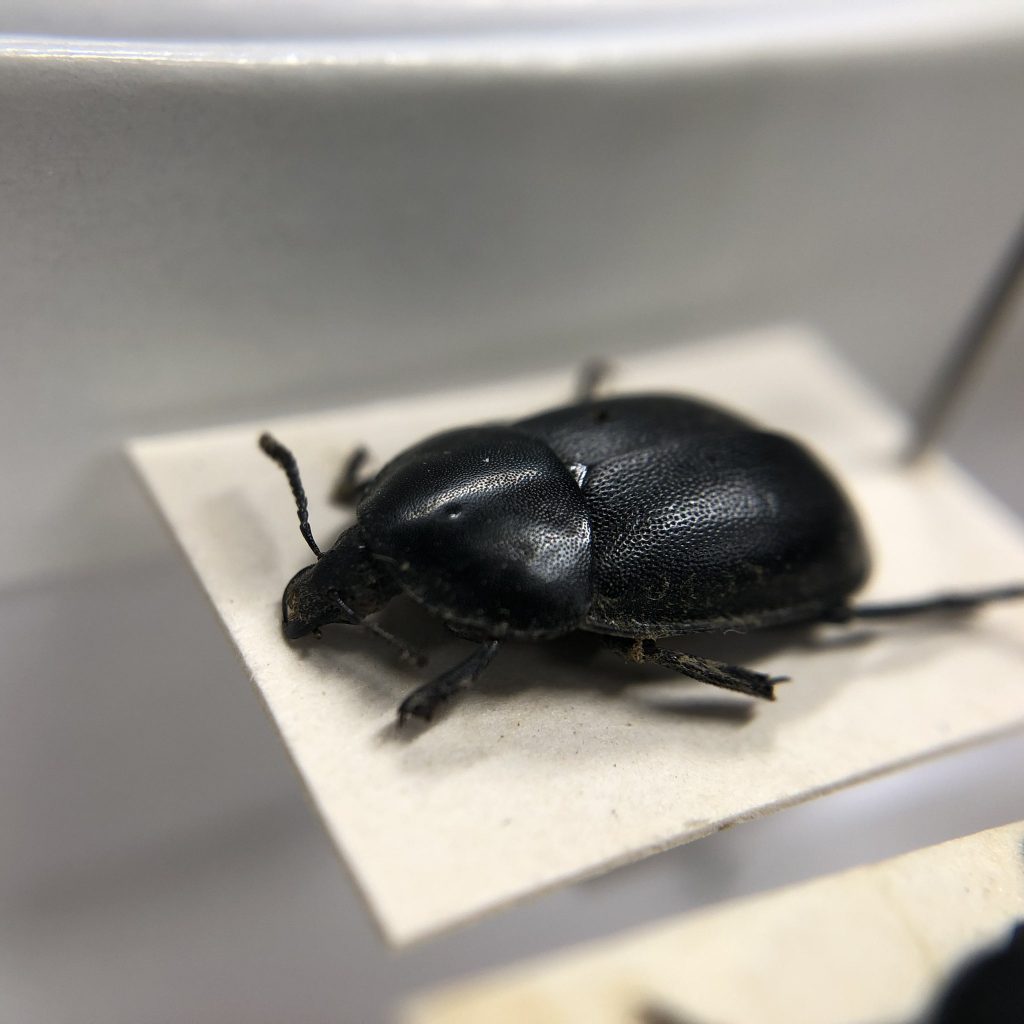Meet the often-unsung heroes of the natural world: carrion beetles. Important decomposers and recyclers, most carrion beetles feed and breed on dead animals. Assistant Curator of Entomology, and carrion beetle specialist, Ashleigh Whiffin introduces us to the diminutive decomposers.
Carrion beetles carry a faint odour of death. As their name suggests, the majority of the family Silphidae are associated with dead animals. They might not live the most glamorous lifestyle but, as nature’s undertakers, carrion beetles perform an essential job.
The Nicrophorus species are well known for their ability to bury dead birds and small mammals (such as mice). This gives them their other common name of ‘burying beetles’. Since carrion is an ephemeral resource, the beetles act quickly to conceal their find, avoiding competition from other scavengers. And quick is right: they can complete the burial process in just five to eight hours!
If that’s not impressive enough, these beetles are also devoted parents. The male and female work together to prepare the dead animal, turning it into an underground nest. They defend it against rival insects and helpfully pre-digest rotting flesh to regurgitate for their offspring. Can you say the same about your parents? As well as this endearing behaviour, their habit of burying carrion means that they play an important role in the recycling of dead animals and are vital in maintaining a healthy ecosystem.
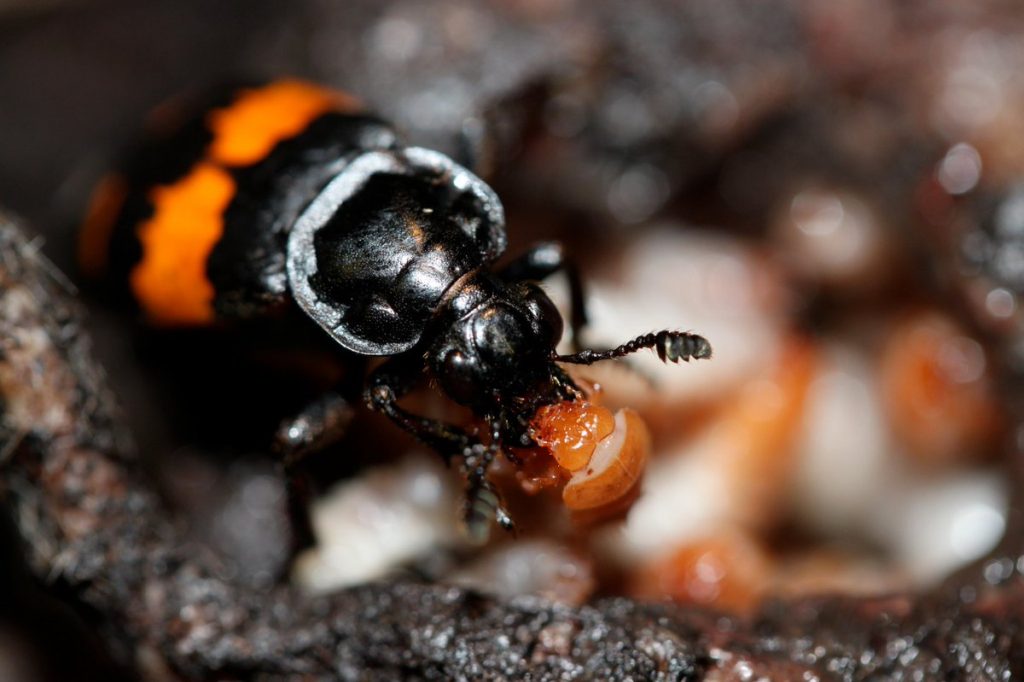
There are only 21 carrion beetle species recorded from Britain. Several are widespread and common in domestic gardens, parks and woodland. Some of them are also attracted to light, like moths, so they occasionally gather at outdoor lights or wander into buildings. The most frequently encountered burying beetle is ‘The Undertaker’ (Nicrophours humator), a large beetle, smartly dressed head to toe in black, except for its clubbed orange antenna. A close second is the banded burying beetle (Nicrophorus investigator), also with orange antennal clubs. This is one of five species with striking orange markings on its wing cases (elytra) which act as a warning to predators.
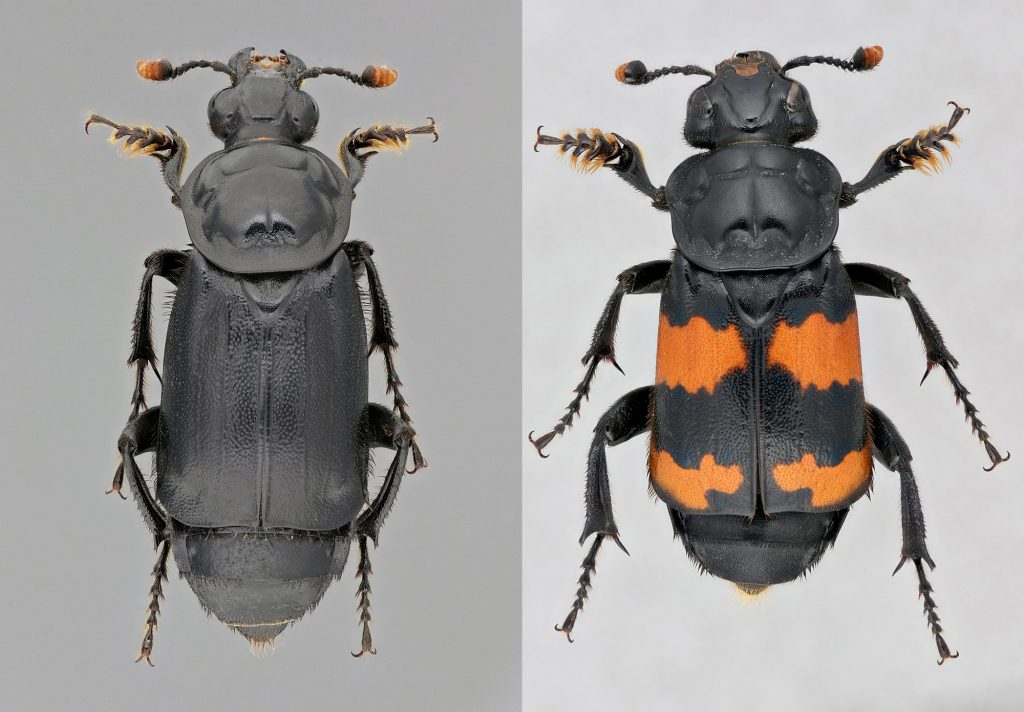
Species such as the Shore Sexton beetle (Necrodes littoralis) are not such invested parents. Their offspring feed on larger carrion above ground, again fulfilling an essential decomposer role. That is, unless they are tricked by a Corpse flower like the one that visited the Royal Botanic Garden, Edinburgh in 2019.
Despite being called carrion beetles, this fascinating group also contains a few species that don’t feed on carrion at all. Some are solely predatory, like the common snail hunter (Phosphuga atrata) that preys on snails, using its skinny head to access the fleshy animal within the shell. And the Caterpillar hunter (Dendroxena quadrimaculata), which prowls the canopy of oak trees searching for moth caterpillars.
To add another lifestyle into the mix, there’s also a species that is phytophagous (vegetarian)! The golden beet beetle (Aclypea opaca) is particularly partial to sugar beet and brassicas. What a diverse bunch!
Our insect collection is a treasure trove of information. Each of our preserved insect specimens is accompanied by data labels that tell us where and when the insect was found, what it was associated with, and who it was collected by. This provides valuable and concrete evidence that a species occurred in a particular place at that point in time.
Extracting this data from the labels means we can compile information that tells us more about species distribution and observe any changes that have occurred over the years. This information, alongside current recording, is a vital part of informing conservation efforts.
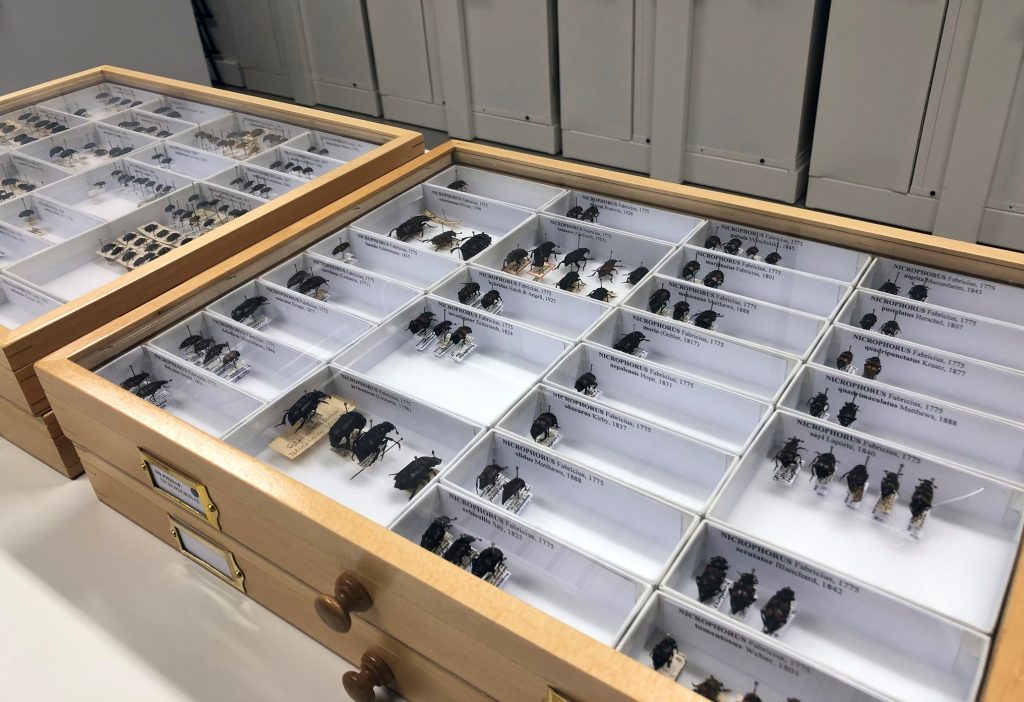
Our Silphid collection contains examples of carrion beetles from around the world, but the majority were collected in Scotland. I recently databased our collection of 800 British and Irish specimens to extract the useful ecological information associated with them. During this process, I came across some particularly interesting examples, such as a specimen collected in 1840 by the Rev. W.D. Fox: Charles Darwin’s second cousin! These historic records now form part of the national dataset for Silphids which is part of our overarching mission to digitise our specimens, making our collection more accessible for research.
In my spare time, I volunteer as co-organiser of the National Silphidae Recording Scheme, one of many citizen science initiatives, working to encourage recording of the lesser-known insect groups. We have been collating records of carrion beetles since 2016 to better understand their ecology, distribution and conservation status.
Thanks to a community of dedicated biological recorders, we have accrued over 30,000 records, recently enabling the creation of a collaborative new book. However, there is still much work to be done and we’re keen to get as many people recording these beetles as possible! If you’d like to learn how to identify them, then you can take a look at our free resources, or watch our Introduction to Carrion Beetles which was hosted by Buglife earlier this year.
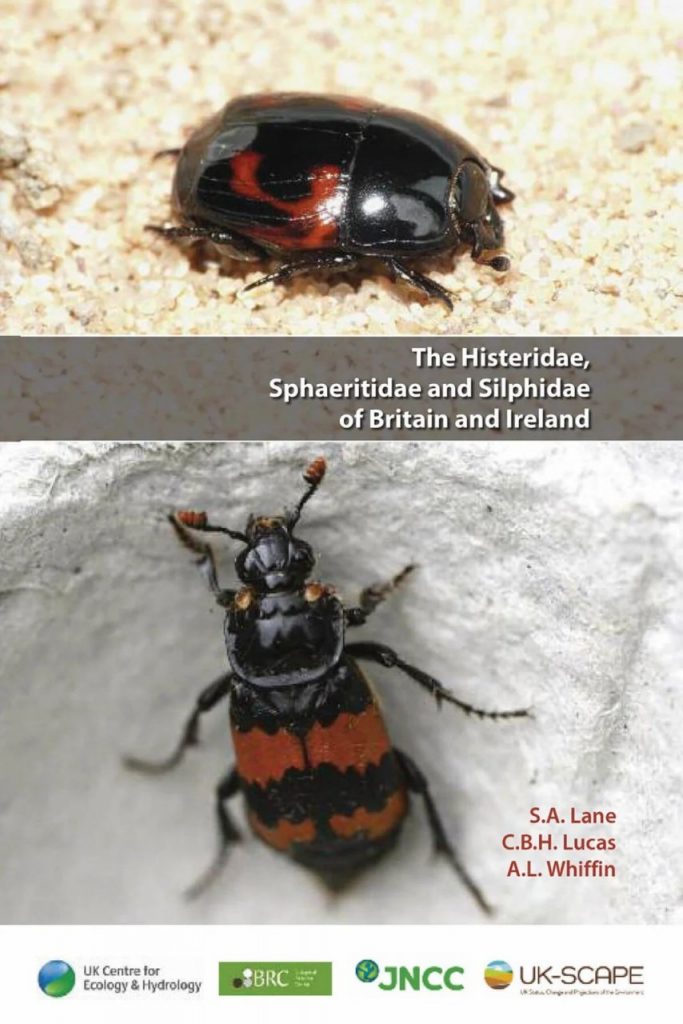
While decomposers tend not to get as much publicity as their pollinator counterparts, they are equally as important. A world without carrion beetles and other decomposers would be a pretty awful place to be!
Next time you hear Beyonce ask “who run the world?”, you know the answer…


